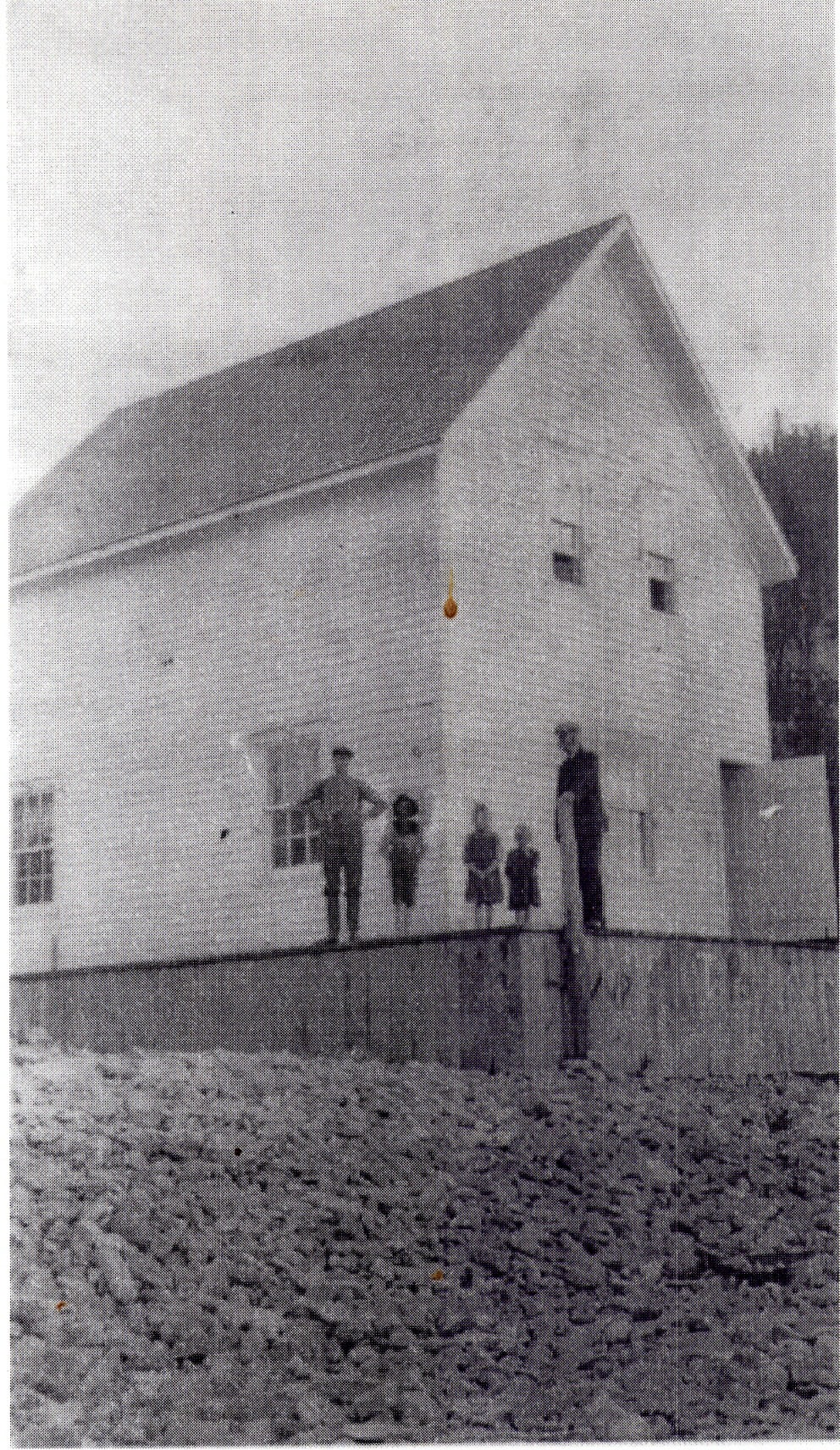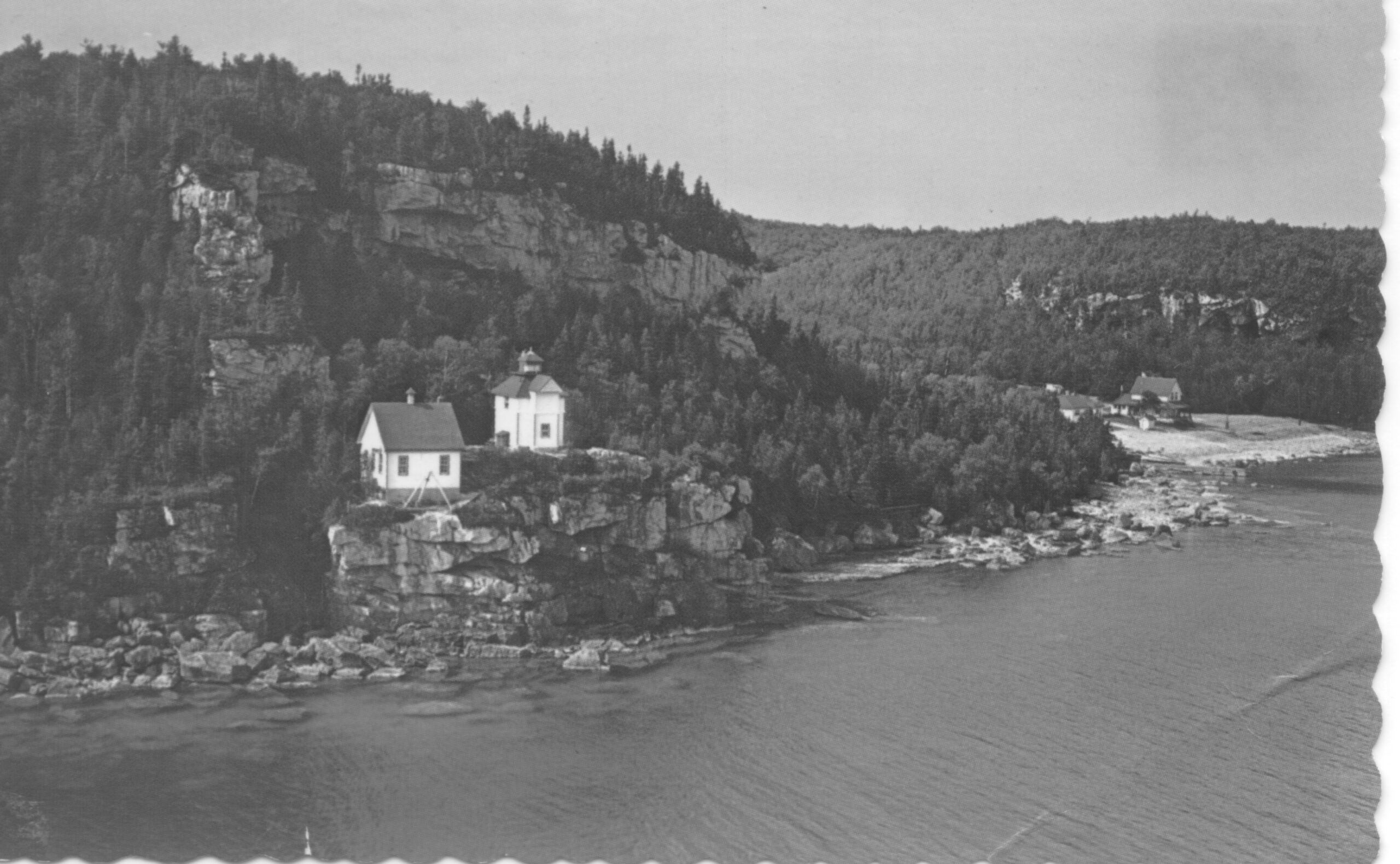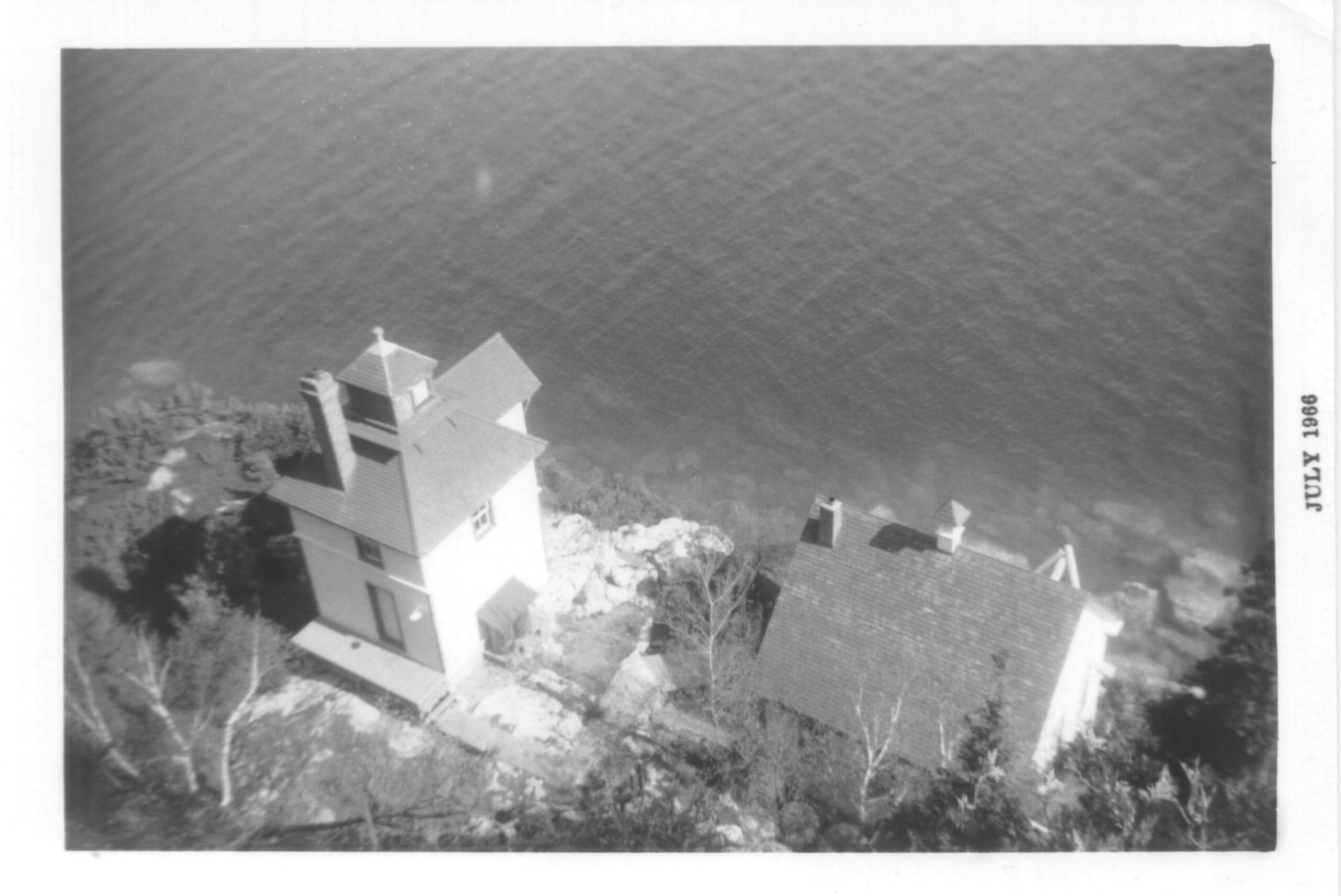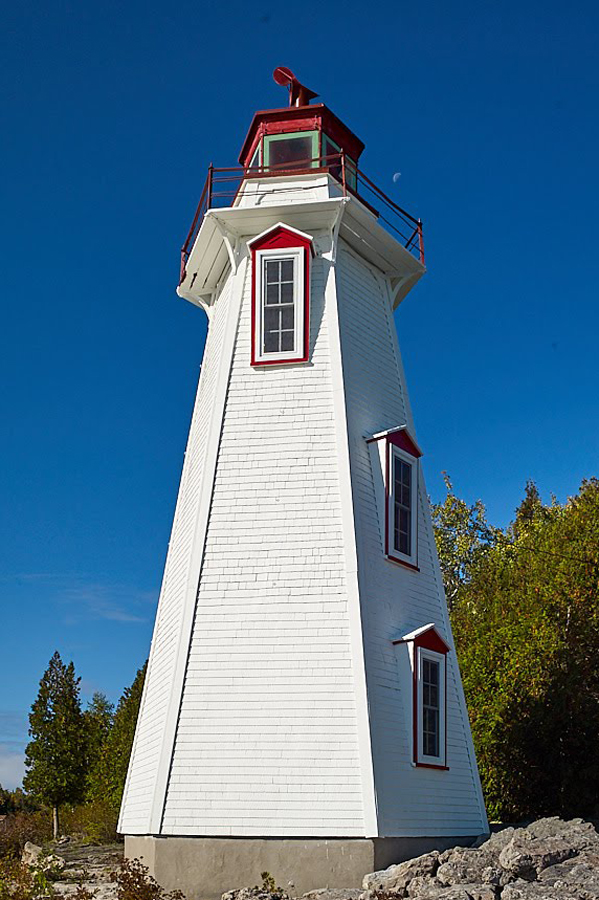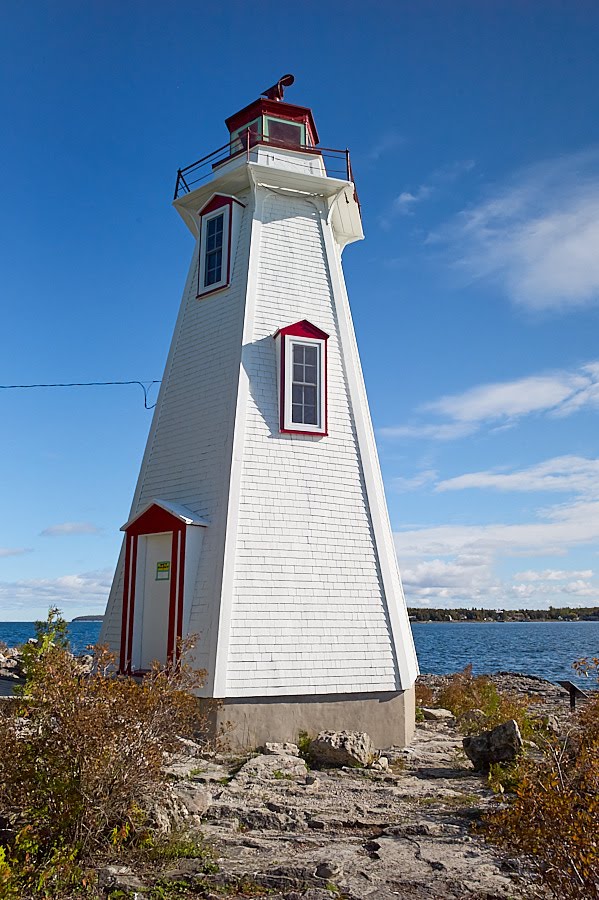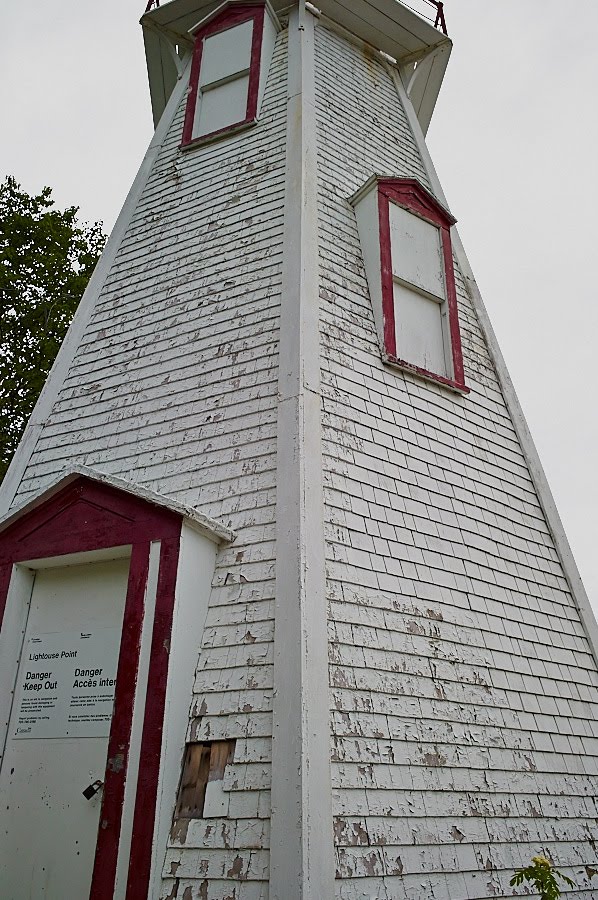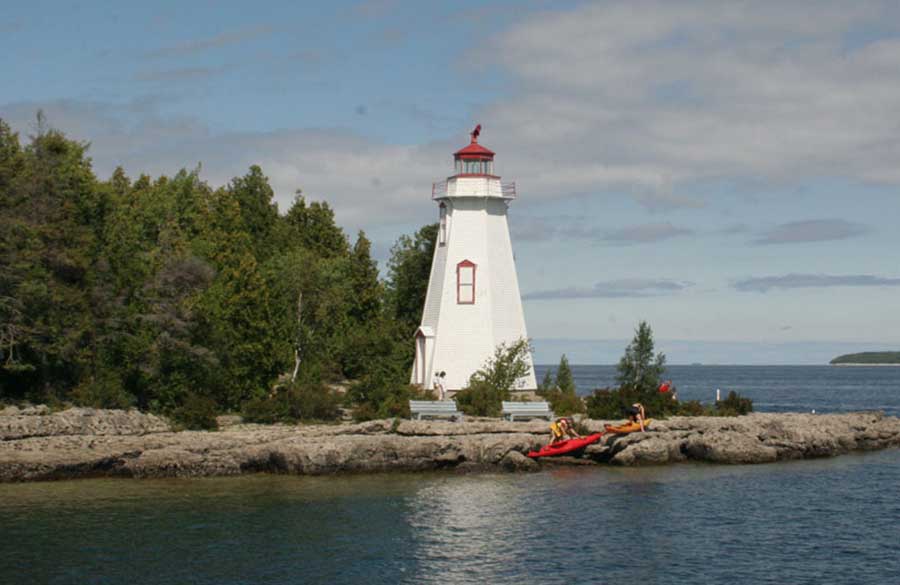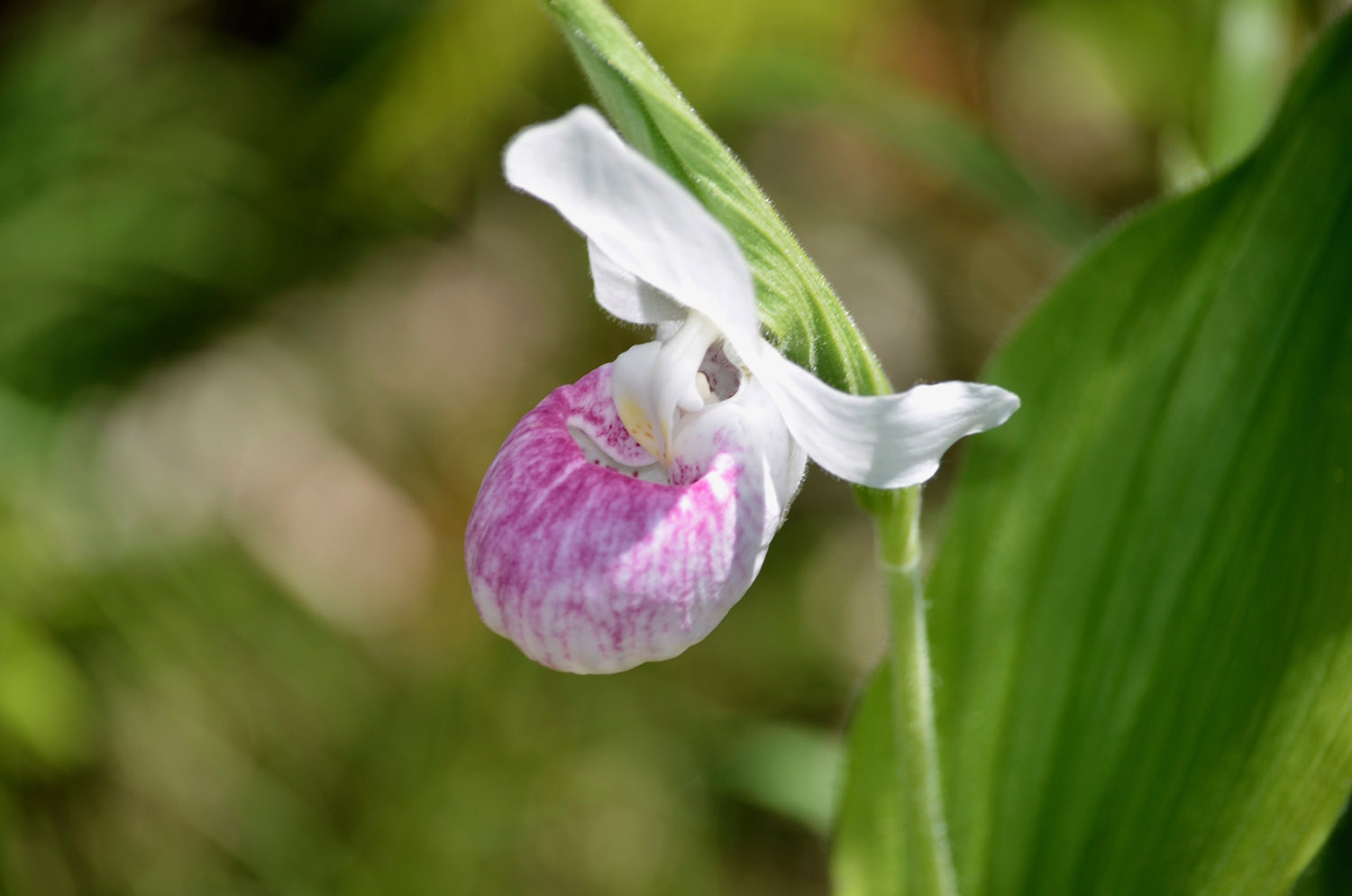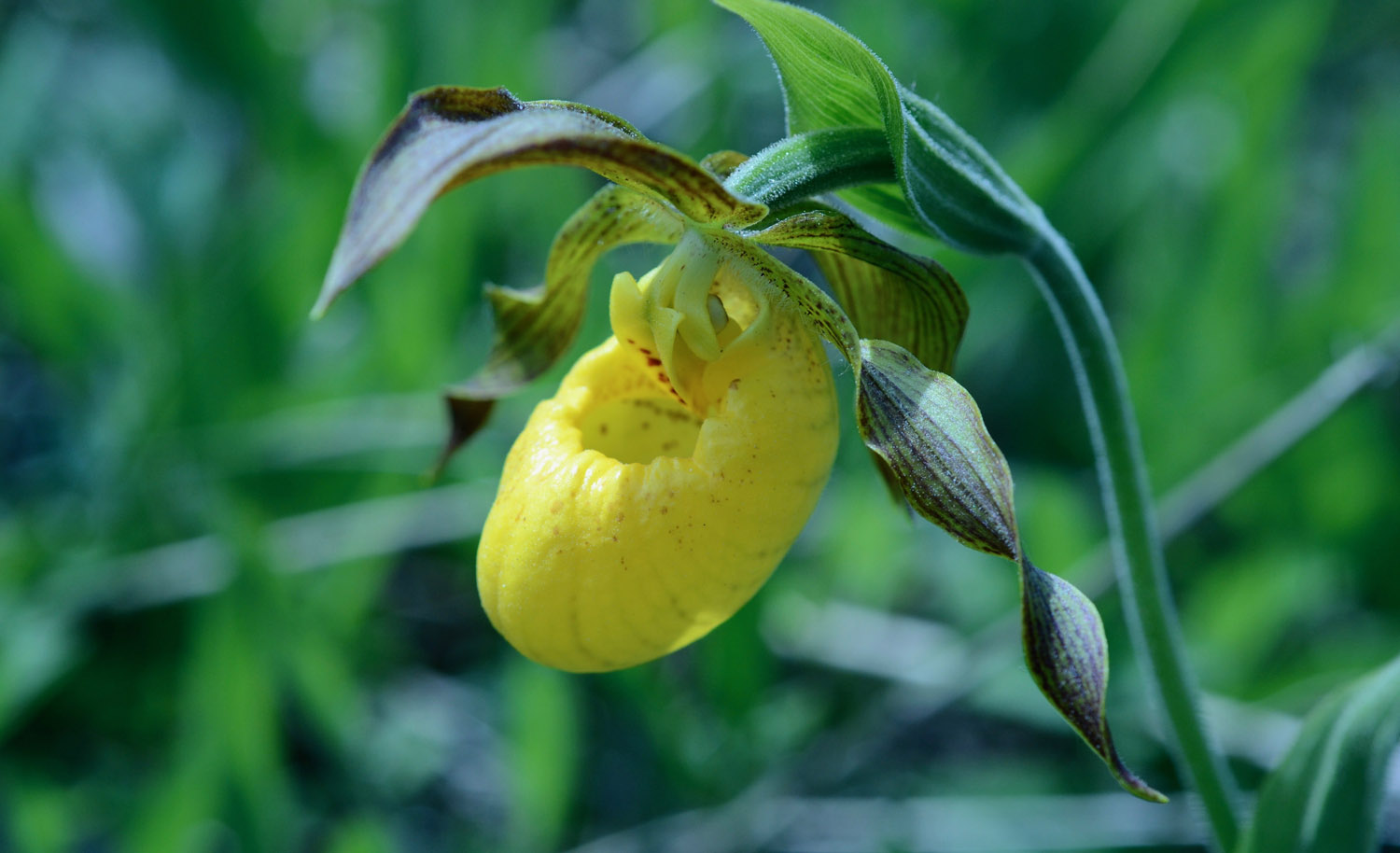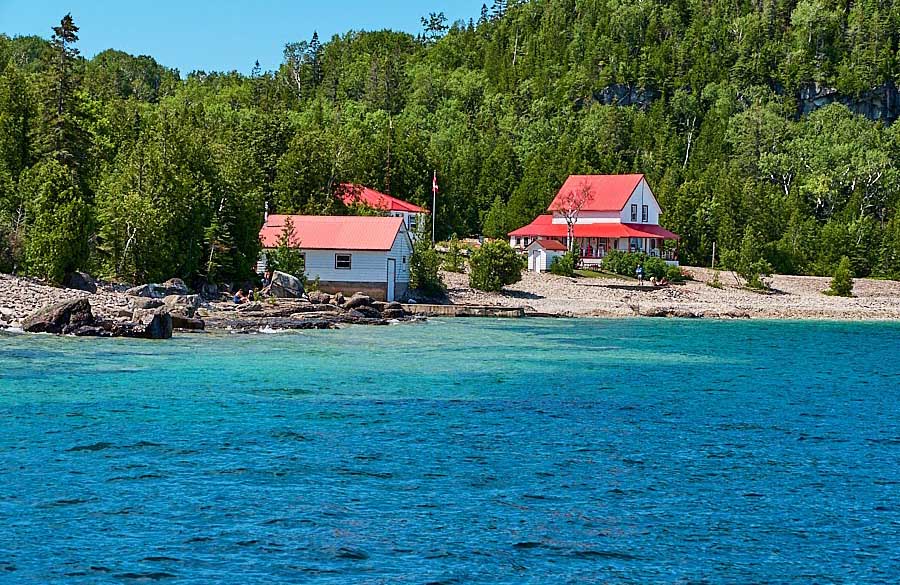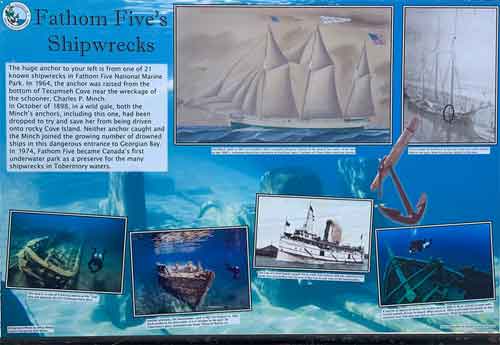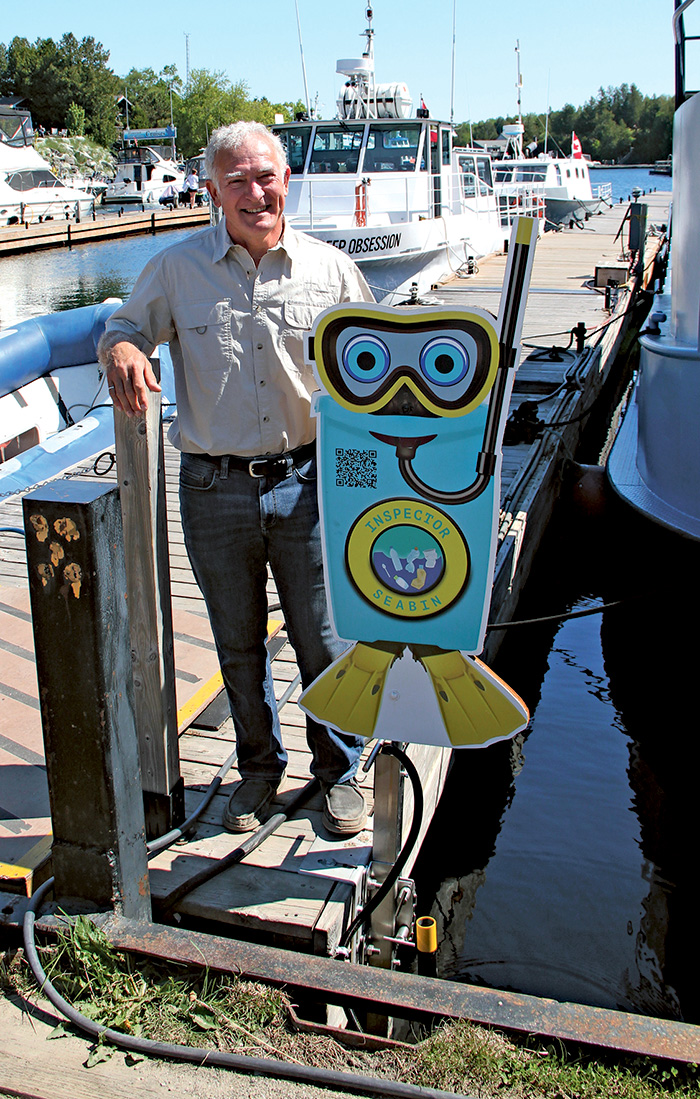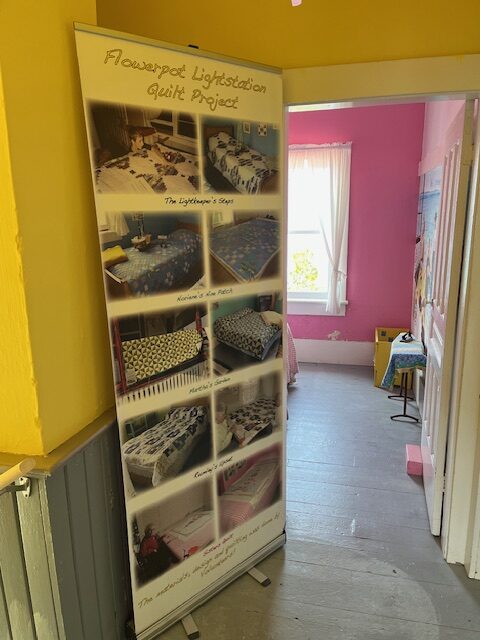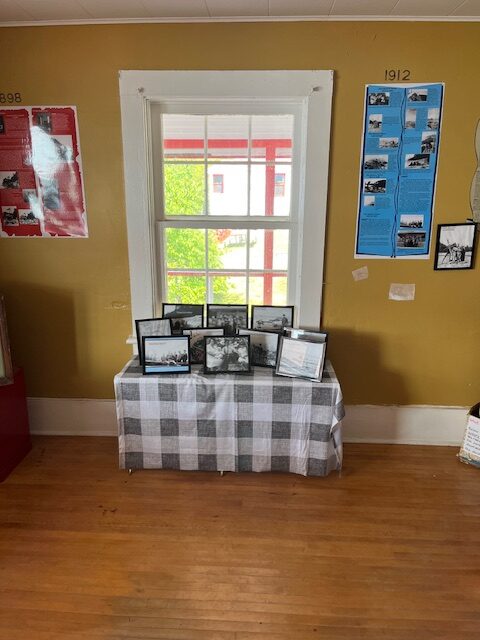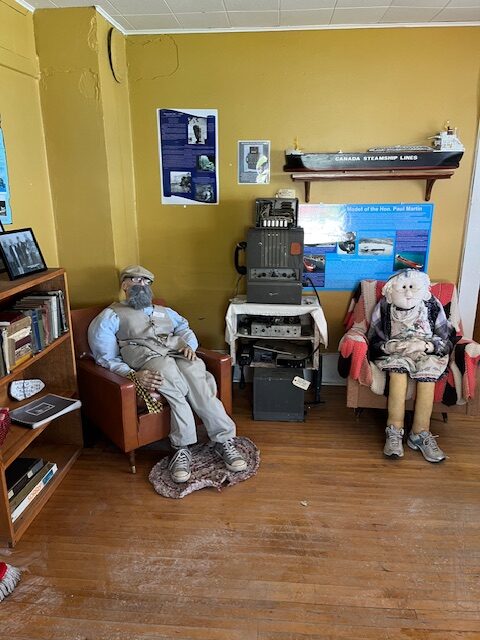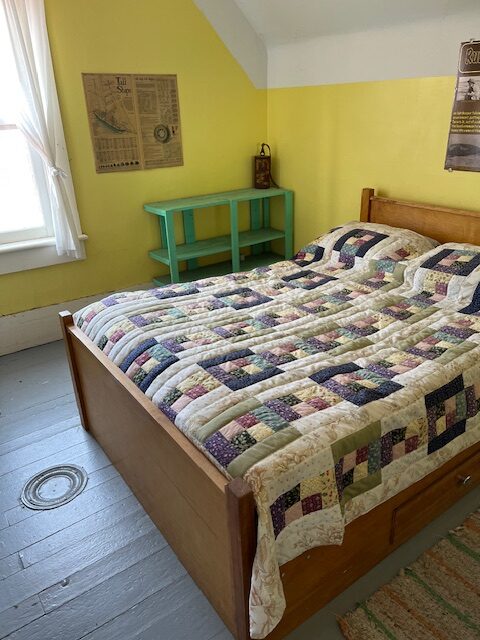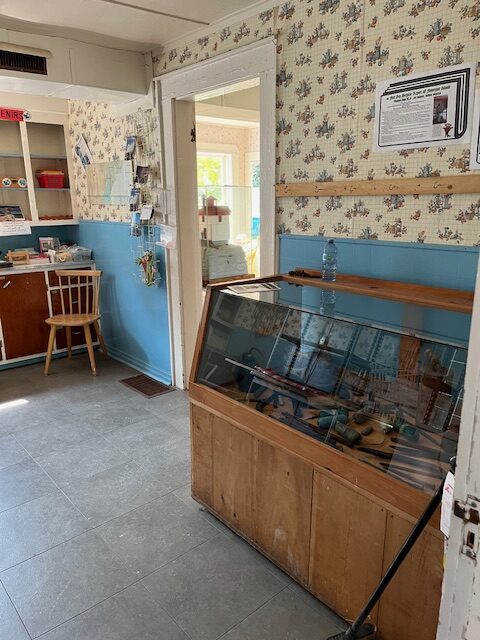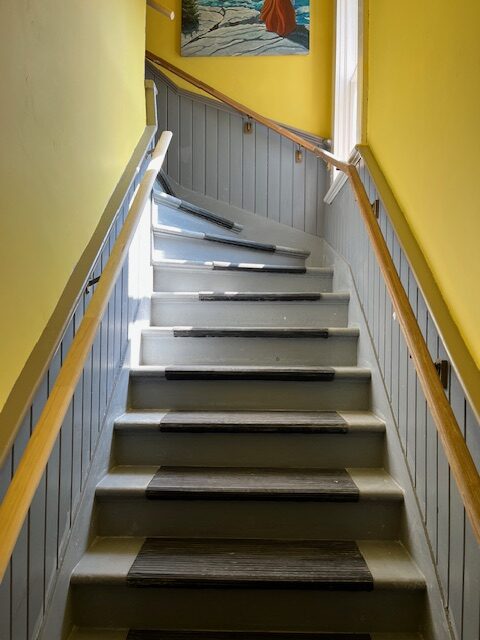Scroll below for details.
Supported Projects
Flowerpot LightStation Big Tub Lighthouse Orchid Festival Host Program Interpretive Signage Sea Bins Project Shelter Cabin Museum
Flowerpot Island LightStation
In the winter of 1995, concern over the deteriorating condition of the abandoned lightstation on Flowerpot Island sparked an interest among volunteers with the Friends of Fathom Five.
In the spring of 1996, working in co-operation with the Canadian Coast Guard and Fathom Five National Marine Park this group of dedicated volunteers set to work refurbishing the site and the work continues to this day!
Since then, for the past twenty plus years, thanks to the generous support and efforts of volunteers and partners, many major projects have been undertaken at the station. Both houses have received new steel roofs along with many coats of paint over the years, gardens have been reestablished, displays have been developed for the museum and a small shop, offering cold drinks, small snacks, and unique gift items for the visitors has been opened. The lightstation has also gone ‘off the grid’ and all power to the site is solar!
THE HISTORY OF GREAT LAKES LIGHTHOUSES AND THE FLOWERPOT ISLAND LIGHTSTATION
Before modern day marine charts, weather forecasting, radar and GPS, experiencing a storm on the Great Lakes was to be avoided as much as possible. Great Lakes captains did not have a wide ocean with the option of running… Read More …
Big Tub Lighthouse
Big Tub Lighthouse has been a close-up hands-on treasure in the community since 1885. It was originally built to help guide ships through the waters of Georgian Bay and Lake Huron. The wooden structure is 14 metres tall and is located on the west side of Big Tub Harbour in Tobermory, Ontario. It marks the entrance to Big Tub Harbour, the main commercial harbour at the time.
It weathered some years of neglect as modern shipping practices reduced the need for shore-based navigational aides. It just needed a local volunteer group to show it some love and it has recently been restored to its former beauty with new windows, faithful reproductive work on details and a fresh coat of Canadian marine white and red paints. It remains a highly visible reminder of the stormy history of the region and a beacon to safe haven in the Big Tub Harbour and its smaller partner Little Tub, and still remains an aid to navigation.
The original Friends of Fathom Five financed and installed the walkway out to the Lighthouse, keeping unsuspecting visitors out of the poison ivy that thrives on that point. A special committee of Friends of the Parks recently fund-raised and oversaw the more extensive renovations and continue to maintain the structure. In 2011, Friends of the Bruce District Parks Association established a committee to monitor and care for the Big Tub Lighthouse. A grant from the Regional Lighthouse Group funded some of the interpretive signage at the site that tells more of the story surrounding this local treasure.
Orchid Festival
The Bruce Peninsula is home to some globally unique ecosystems that support an amazing variety of flora and fauna.
Orchids thrive here and we not only have 44 species living here on the peninsula, we also can boast some incredibly rare wildflowers such as the Dwarf Lake Iris, Nodding Trilliums and the Lakeside Daisy.
Each year we gather friends from near and far to celebrate the bounty here and to view these fantastic flowers in their natural habitats. In fact, many of these flowers are so picky about their habitats (and the surrounding structures and supporting organisms) they will not survive anywhere else and will promptly perish if moved.
LIGHTKEEPERS HOST PROGRAM
In 1998 the Friends began The Volunteer Lightkeeper Host Program. This program allows volunteers to live at the lightstation for several days at a time. While on site, these volunteers perform the duties of a modern day lightkeeper. A volunteer lightkeeper’s stay is a working vacation! Modern day lightkeeper duties include but are not limited to greeting visitors, care and maintenance of lawns and gardens, providing a presence in the museum house and managing the sales/donation area.
While on duty, volunteer lightkeepers represent the Friends and Parks Canada. Hosts may wish to live in the furnished, three-bedroom lightkeeper’s cottage which is equipped with a solar powered refrigerator, propane stove, dishes, pots/pans and cutlery. Hosts may wish to cook in the outdoor cookhouse equipped with a propane stove and a barbecue. There is a furnished living room and three bedrooms. Basics such as drinking water, toilet paper, garbage bags, dish soap and cleaning products are supplied.
Seabins Project
Seabins are garbage bins for the water.
Much like its counterparts on land, the Seabins help keep garbage out of the environment by intercepting trash that has made its way into the water ecosystem. This consists of plastic bottles, film fragments, microplastics, cigarette butts and other organic matter. They are collected in a mesh bag that floats in the Seabin, where it is trapped until volunteers come and collect it.
Seabins are located all over the world, with many in the Great Lakes. There are currently three Seabins in Fathom Five National Marine Park; they operate from mid-May to mid-September and are an initiative of the Sources of Knowledge Forum.
The Friends of The Bruce District Parks have supported this worthy project with funding so as to help keep the waters that surround Fathom Five National Marine Park clean and healthy.
Flowerpot Shelter Cabin
The Shelter Cabin, formerly known as the Warden’s Cabin, is located at Beachy Cove, on the South Side of Flowerpot Island. The cabin was used in the past by personnel of Parks and its predecessors, but more recently had fallen into disrepair. It was repaired, with an addition added, and is now available for use by Parks staff, and from time to time, by Friends.
The cabin has a kitchen and 2 small bedrooms. It also has a larger area that can be used for various Parks or Friends functions, including workshops. In the summer of 2023 the cabin was used as the base for a bat count of the numbers and species of bats inhabiting the caves and cliffs of Flowerpot Island. 107 bats were counted, from 5 species. The cabin is also used for the storage of safety equipment that is on occasion needed, and can be used for shelter in the event storms prevent the cruise boats from returning to the mainland.
Friends has provided funding for cooking apparatus, cots, chairs, and other furniture and required items. This allows the cabin to be fully operational for those Parks personnel who staff the dock at Beachy Cove, and otherwise keep watch over the activities on the Island.
Museum
The Museum at the Flowerpot Island Lightstation is housed in the original two-storey Lightkeepers’ home built in 1901. When the wooden Lighthouse, high on nearby Castlebluff, was torn down in 1969 this home became the oldest building on site.
When The Friends took over responsibility for the Lightstation in 1996, only the grounds were open to the public. It took a lot of hard work but by the time of the 100th Anniversary celebration of the Lightstation in 1997 the home was opened to the public for the first time. Since then touring the original lightkeeper’s home is the most popular activity at the station.
There were only a few pieces of furniture and some laminated photos on the wall when the home opened in 1997, but the enthusiasm was palpable and the idea of creating a small Museum was born.
The home retains the original wood floors, wainscoting and paneled doors. Mid 20th-century upgrades included a three-piece bath, oil furnace and propane stove (all have been removed). Kitchen cupboards were added along with electricity and plumbing. The house retains a very 1950-1980’s feel. Visitors comment that it reminds them of Granny’s house on the farm or a childhood home in the Maritimes.
Mid-century brought many technological changes to Lightstations across the country. As the original Lighthouse is gone at Flowerpot (replaced by a steel tower), it was decided that the focus of the Lightstation would be a Museum featuring the families who lived there and all the changes new technology brought to their lives. Can you imagine how the introduction of electricity and running water made all tasks easier?
The upstairs bedrooms received fresh coats of paint in bright, cheerful colours, based on the colours they were in the 1960’s. To highlight the families who lived there, murals depicting life at the Station, designed and painted by a volunteer artist, adorn one wall in each bedroom.
Each bed has a quilt designed specifically for the room it occupies. The quilting was done, over the course of many years, by volunteers on a frame set up in the dining room. Chief volunteer quilter Shirley supervised the project and delighted in sharing the stories of the mothers and daughters who called the Station home.
Water damage in the living room necessitated the removal of the wallpaper. An exciting find was the signatures on the old plaster walls.
Since those early Museum days, professional posters and banners have been added. The posters focus on the lives of the individual lightkeeping families, the history of the Station, and exhibits such as the Watch-and-Warn radio and the quilt project. The banners highlight various projects The Friends have completed on-site since 1996.
In 2012, the Station lost electricity for the final time, when the under-water cable bringing power from the mainland was disconnected. One of the most fascinating projects since then has been the installation of solar power. This change has had a very positive effect on the modern Lightkeepers (volunteers) who now visit and work at the Station. It is another chapter in the story of technological changes over the history of this special place.
Come visit the Museum. Imagine a lightkeeping family living here. Chat to a friendly volunteer who may share a story about youngsters running to the cave for butter or the time the Flowerpot sea monster was spotted offshore! Enjoy a cold drink or snack purchased from the Friends volunteers who maintain the small tuck shop in the original kitchen.
Take a few moments and enjoy one of the rocking chairs lined up on the beautiful front porch. Play a game of checkers. As you contemplate the gorgeous, but oft times dangerous, waters of Georgian Bay, imagine yourself a 20th century Lightkeeper taking a brief break from your duties maintaining the Light for the safety of passing ships.



